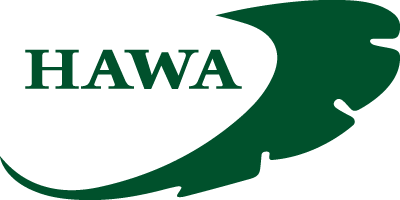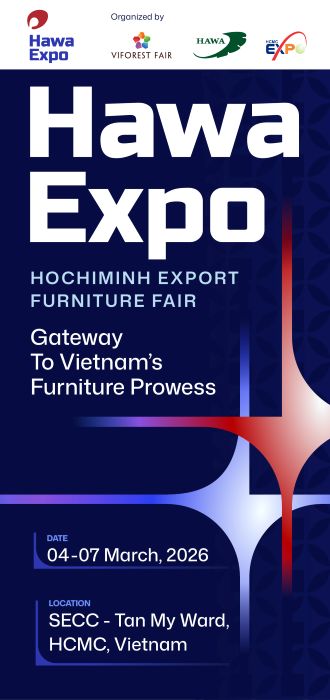Completely unlike manufacturing, Vietnamese businesses need to seriously improve the ability to converse with their consumers. Such ability is built upon this formula: Market research + design + communication.
Being a world leading exporter of furniture, Vietnam has in many years enjoyed a two-digit growth rate.
Removing the hurdles of OEM
Similar to textile and footwear industries, Vietnam’s furniture has all the strengths to become a competent supplier in the global market. However, viewed from last year’s level of decline, the same industry has been suffering the serious impacts caused by shortage of order. The buyers control the input and output, therefore they control the cash flow. Upon any negative sign, manufacturers would automatically divert the orders to minimise the damages caused. Instead, they are passive with both their plan, investment on machinery, stockpiling material, or hiring labourers…
This passive state might also lead to the risk of being unsustainable, since the business can be easily replaced when the buyers can locate better pricing partners. The easiest example being green consumption trends which currently pose an array of hurdles such as eco-certification and country of origin. Businesses that cannot comply will quickly be eliminated because this change requires a large investment and cannot be carried out overnight.
We have to acknowledge that outsourcing has been a necessary phase for Vietnamese businesses to survive and gain their current positions. Over the last 30 years, they have accumulated adequate strengths as well as potential to access the higher values in the supply chains. But it is time they changed, and those who can change will break through.
Unlike production, Vietnamese businesses have not been able to accumulate the competency for product development. The competency for design must first come from a market understanding in order to develop suitable products. Of no less importance is the shortage of marketing competency amongst the local businesses in Vietnam. Supplying products for OEMs is entirely different from convincing millions of global customers to buy your products. If we are not able to “converse” with them, how can trust be built, or connection established?

To overcome such barriers, businesses should bolster their competency for product development. This can be achieved independently or cooperatively amongst multiple companies on board together. If any difficulty is encountered in these early steps, they can resort to buying designs from the more competent companies, collaborating with their design team to develop their own products, or collaborating with their customers. Attention is called for here, Vietnamese businesses are very capable of producing technical designs, therefore they can buy the ideas, so that in the long run they can be competent enough to develop their own products.
The next and more demanding mission is to build a team to study the market. They need to better invest on this dedicated team, not only for the local market of Vietnam but also the targeted markets. Having an R&D department in the international markets will bring on greater opportunities to acquire local customers. Even big brands such as Samsung need to establish their own R&D centre in the U.S to approach their customers. To be able to develop competent products in international markets, local businesses need to be able to understand the needs and preferences of their target audience. They therefore have to establish a capacity to deeply understand a market. Once the market is fully understood and products fully developed, the businesses need to work on their marketing in order to acquire more customers.
Build trust and transfer trust
In any market, market research, product development and marketing always go hand in hand. This formula enables the ability to actually converse with customers while granting them access to the export markets. However, the implementation of the three is far from easy. Unlike spending on manufacturing facilities, the businesses are supposed to develop a specific strategy in order to build their market understanding, product development and marketing. The ability to converse with customers needs to be developed over time, not without the initial failures, so long as the lessons from them are well learned.
Building a brand and attracting more consumers is always a long term investment. After an outsourcing period, many businesses have determined to infiltrate the U.S market by registering patents and editing ordered designs to sell at lower prices. It is not what it seems. The added profits for businesses placing orders in Vietnam and selling to the U.S market only ranges from 10 to 15%. The rest has been spent for marketing, brand building and establishing connections with retailers. For the products and markets to “converse with each other”, the businesses have to invest in long term marketing, to build greater market trust. The spending on marketing takes up to 65% of their revenue.
Customers do not know better about the businesses choosing to “sell short”, dumping prices, spending a large amount of money on ads and attractive visuals. Having a good brand property does not exempt them from being equated with lower-pricing Chinese brands. To sell in the U.S., the businesses have to either do the same as those Chinese companies, or boost their marketing capacity to be as strong as the U.S. companies.
In 2011, we counselled a software company from Vietnam. Their focus was on manufacturing. Our mission was to research the market, anticipate the market demands for a studio specialising on design and coding, and sell the finished products. Every week, the company convened meetings with the customers, with them studying the market, sharing every information with the studio, and developing new applications. After the counselling period, when the products were officially launched in the U.S market, we deepened our cooperation with the company, together building and operating the business.
Compared with such old days, there are a lot more advantages in market research, brand building and marketing, especially thanks to the aids of technology. On the digital platforms, nowadays businesses are not only conveying the messages and images of their products and brand to the consumers, but also measuring the concerns of their customers, or how preferences are changing… The furniture industry can adopt the same practice. Certain major players can cooperate in order to co-invest in a single, well executed brand. This brand will then give orders to the cooperating businesses. Such a cooperation model consumes fewer resources while minimising the risks and facilitating more favourable conditions for more businesses to join the market.
The U.S market is tough, with high rejection rates, but is also the most accepting market. Americans are open-minded, and willing to welcome novelty. The ecosystem serving the sales in this market has been complete from payment, after-sales, to carriage. Vietnam is already the largest furniture supplier in the U.S. Once the products are developed better, the reviews will be better and reach more prospective customers, thus businesses will certainly be successful in their quest for greater values in the supply chains.
Nga Ho-Dac (Hồ Đắc Nguyên Ngã) is an Assistant Professor of Marketing at San Francisco State University. He earned a Ph. D. in Marketing from the University of Utah, an M.B.A. in International Business from the Asian Institute of Technology, and construction engineer graduate from Ho Chi Minh City University of Technology.
Nga Ho-Dac, Assistant Professor
By M.K










